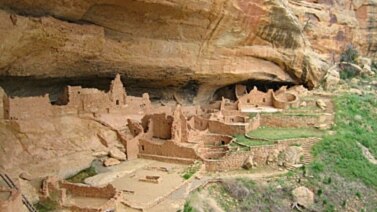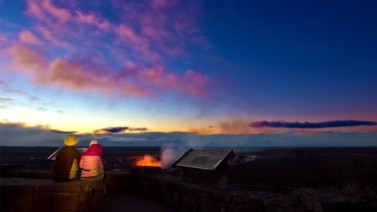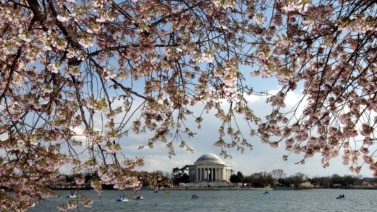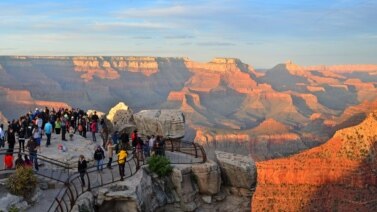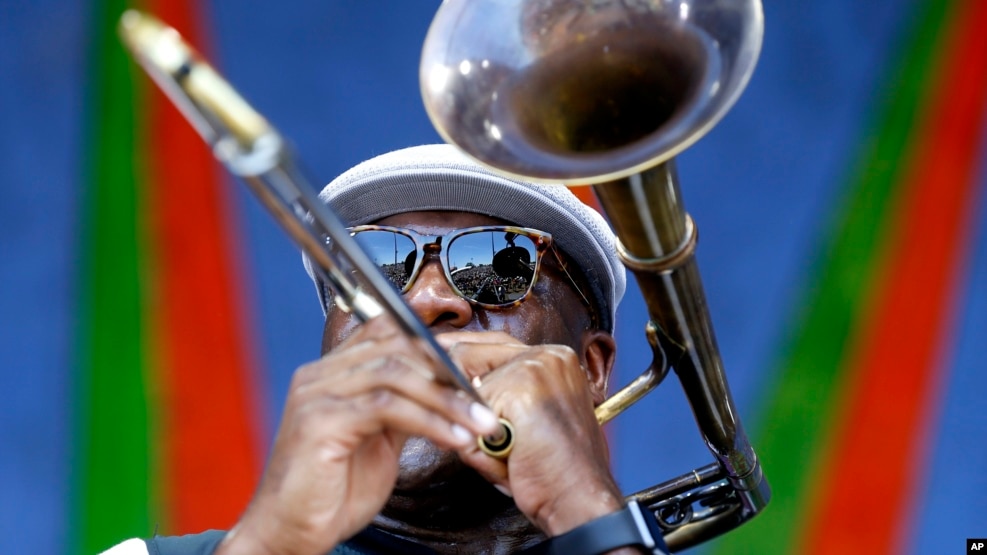
Our National Parks journey this week takes us to New Orleans, Louisiana, the city many consider to be the birthplace of jazz. New Orleans is a port city at the mouth of the Mississippi River.
It holds one of the most famous cultural celebrations in America: The New Orleans Jazz and Heritage Festival, called Jazz Fest for short. This year, the event opened April 22 and continues through May 1. It is the 47th festival. Famous performers this year include Stevie Wonder and Paul Simon.
The first New Orleans Jazz and Heritage Festival took place in 1970. That year, about 350 people attended the five-day celebration.
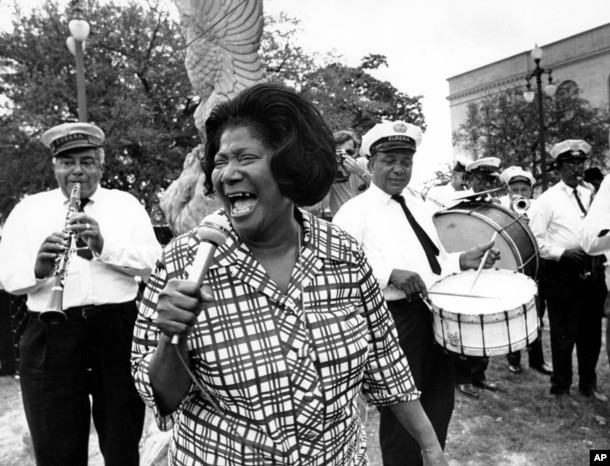
Five years later, about 80,000 people attended the festival. Today, attendance is measured in hundreds of thousands.
The festival's original organizers said the event “could only be held in New Orleans, because here and here alone is the richest music tradition in America.”
And, only in New Orleans could you find a whole national park honoring jazz. Today, we are exploring the New Orleans Jazz National Historical Park.
The park includes sites important to jazz history in New Orleans. Visitors can walk around the city to see these sites. They include places located in the oldest part of the city -- the French Quarter -- as well as in the Louis Armstrong Park.
Louis Armstrong is one of the greatest American jazz musicians. His voice, trumpet-playing skill and creativity continue to influence jazz artists today.
Armstrong was born in New Orleans in 1901. Jazz was just beginning to develop when Louis was a boy. It grew out of the blues songs and ragtime music that had been popular at the turn of the century.

Louis Armstrong discovered music early in life. He was surrounded by it. By the time he was 18, he joined the Kid Ory Band, one of the finest bands in New Orleans. In the 1920s, Armstrong moved on to Chicago, and then New York, which had become major centers of jazz music.
The trumpeter soon became one of the most famous musicians of his time. In the 1930s, he had his own big band, called Louis Armstrong and his Orchestra.
But, his biggest hits came later in his life. In 1964, his version of the song “Hello Dolly” was the top hit around the world. And the song “What a Wonderful World,” recorded in 1968, was his final big hit.
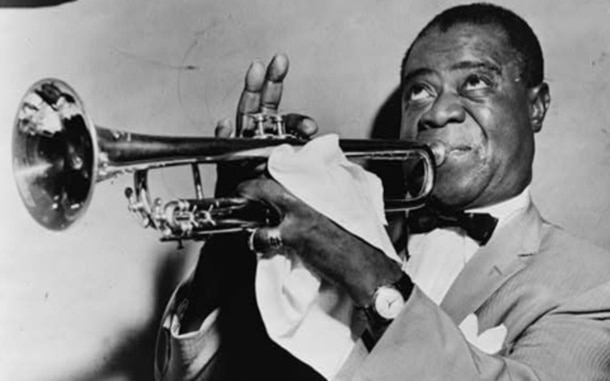
Armstrong died in 1971. In 1980, the city of New Orleans opened the Louis Armstrong Park to honor one of the city's most famous sons. Among other sites, the park includes a statue of Armstrong himself and a place called Congo Square.
Throughout history, the square had many names. Congo Square was once used as an area where slaves were permitted to perform African and Caribbean dances and drumming. The sounds played a role in the development of jazz. Today, the city holds the annual Congo Square Rhythms Festival there.
Another stop within the New Orleans Jazz National Historical Park is the J&M Recording Studio. It lies just south of Louis Armstrong Park, on Rampart Street. The studio operated from 1945 to 1955. Cosimo Matassa, a recording engineer, was the owner of the studio. He recorded some of the greatest jazz and rhythm and blues artists of the time. Today, the spot is a laundromat. But a small sign on the building points out its important place in music history.
Next, we visit the Mint. A mint is a place that produces coins. The Mint started out as a place where U.S. and Confederate currency was made. But today, the Mint is a famous performing arts center and a museum full of jazz history. That museum is the Louisiana State Museum. Here, visitors can see Louis Armstrong's first cornet -- a brass instrument similar to a trumpet. He bought it in New Orleans when he was 15 years old.
The National Park Service holds live educational performances at the Mint most days of the week. Many of those performances are streamed live online for viewers around the world to enjoy.
Another park site is Preservation Hall, in the French Quarter. The word “preservation” means keeping or protecting for the future. By the early 1960s, traditional New Orleans jazz music was in danger of disappearing. Young people wanted to hear the music of Elvis Presley and other rock and roll stars. Not many young people were interested in listening to jazz.
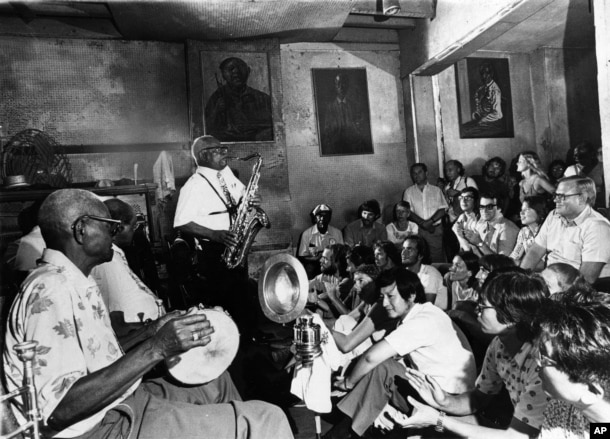
In 1961, Allan and Sandra Jaffe began using a small, old building on St. Peter's Street as a music hall. Musicians there played traditional New Orleans jazz, sometimes just for their own enjoyment. Allan Jaffe was a tuba player. He played with what became known as the Preservation Hall Jazz Band.
The Jaffes created Preservation Hall to protect and preserve the city's traditional jazz sounds. Today, different bands play at the hall each night.

Musicians also still play in the Preservation Hall Jazz Band. They play in concert halls around the United States. They will even be playing on April 30 as part of this year's New Orleans Jazz and Heritage Festival.
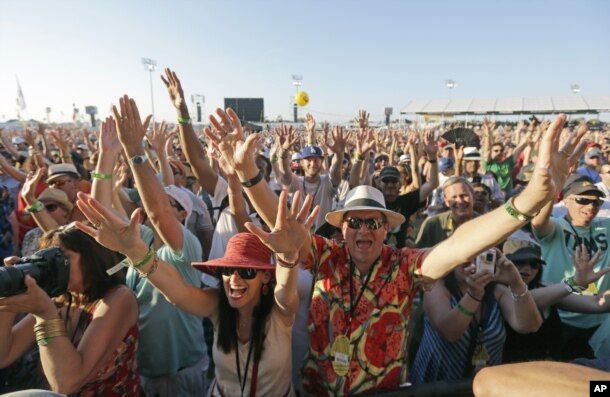
I'm Ashley Thompson.
And I'm Caty Weaver.
Ashley Thompson wrote this report, with material from the VOA Learning English archives and the National Park Service. Hai Do was the editor.

